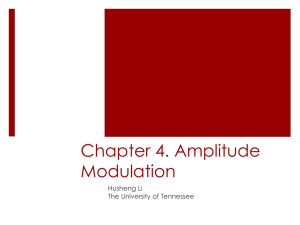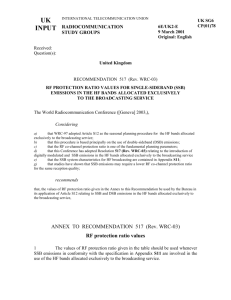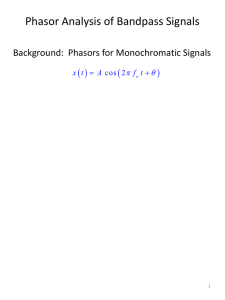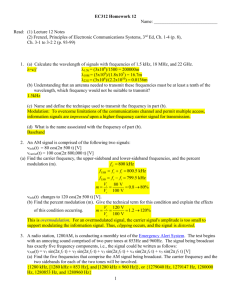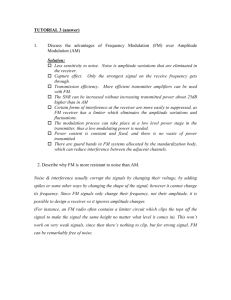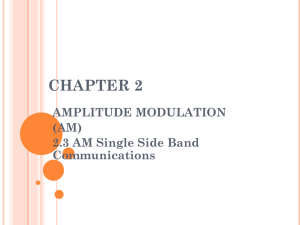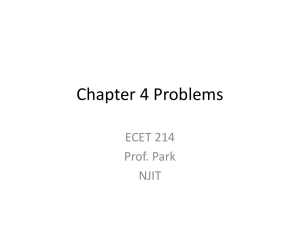RECOMMENDATION ITU-R BS.640-3*
advertisement
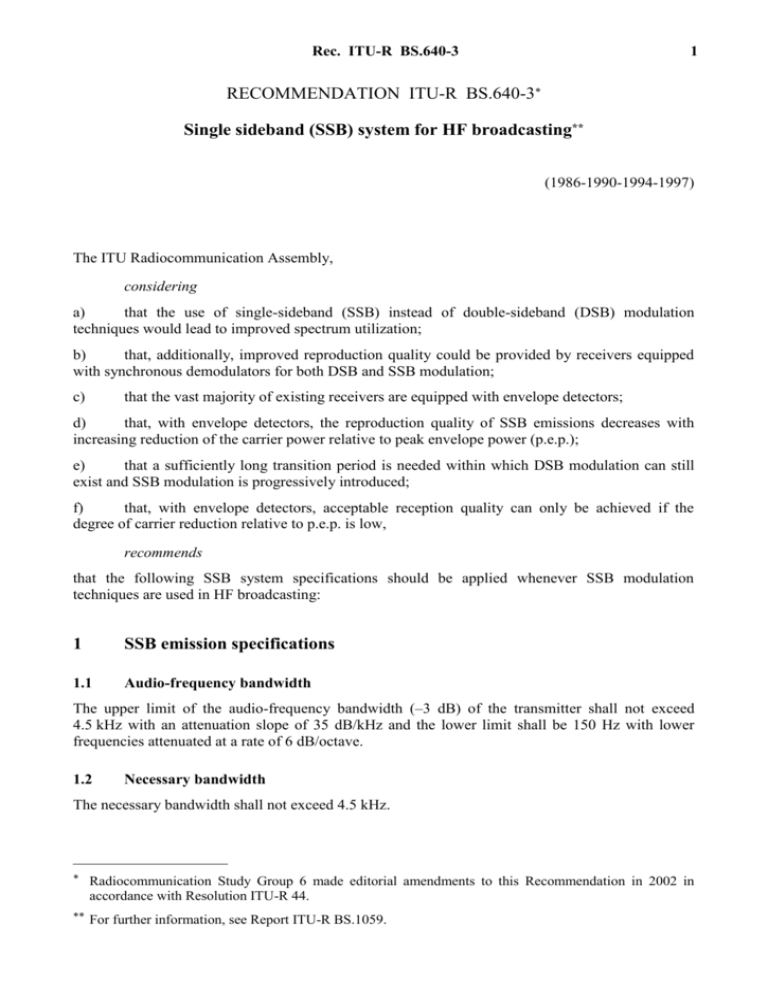
Rec. ITU-R BS.640-3 1 RECOMMENDATION ITU-R BS.640-3* Single sideband (SSB) system for HF broadcasting** (1986-1990-1994-1997) The ITU Radiocommunication Assembly, considering a) that the use of single-sideband (SSB) instead of double-sideband (DSB) modulation techniques would lead to improved spectrum utilization; b) that, additionally, improved reproduction quality could be provided by receivers equipped with synchronous demodulators for both DSB and SSB modulation; c) that the vast majority of existing receivers are equipped with envelope detectors; d) that, with envelope detectors, the reproduction quality of SSB emissions decreases with increasing reduction of the carrier power relative to peak envelope power (p.e.p.); e) that a sufficiently long transition period is needed within which DSB modulation can still exist and SSB modulation is progressively introduced; f) that, with envelope detectors, acceptable reception quality can only be achieved if the degree of carrier reduction relative to p.e.p. is low, recommends that the following SSB system specifications should be applied whenever SSB modulation techniques are used in HF broadcasting: 1 SSB emission specifications 1.1 Audio-frequency bandwidth The upper limit of the audio-frequency bandwidth (–3 dB) of the transmitter shall not exceed 4.5 kHz with an attenuation slope of 35 dB/kHz and the lower limit shall be 150 Hz with lower frequencies attenuated at a rate of 6 dB/octave. 1.2 Necessary bandwidth The necessary bandwidth shall not exceed 4.5 kHz. ____________________ * Radiocommunication Study Group 6 made editorial amendments to this Recommendation in 2002 in accordance with Resolution ITU-R 44. ** For further information, see Report ITU-R BS.1059. 2 1.3 Rec. ITU-R BS.640-3 Characteristics of modulation processing The audio-frequency signal shall be processed so that the modulating signal retains a dynamic range of not less than 20 dB. Excessive amplitude compression, together with improper peak limitation, leads to excessive out-of-band radiation and thus to adjacent channel interference, and is therefore to be avoided. 1.4 Channel spacing The channel spacing and carrier-frequency separation shall be 5 kHz (10 kHz until the end of the transition period). 1.5 Nominal carrier frequencies The carrier frequencies for SSB shall be integral multiples of 5 kHz. 1.6 Sideband to be emitted The upper sideband shall be used. 1.7 Suppression of the unwanted sideband The degree of suppression of the unwanted (lower) sideband and of intermodulation products in that part of the transmitter spectrum shall be at least 35 dB, and, whenever possible, exceed 40 dB, relative to the wanted sideband signal level. If a carrier level of – 6 dB relative to p.e.p. is used during the SSB transition period, the degree of suppression shall be at least 25 dB. 1.8 Degree of carrier reduction The carrier reduction relative to p.e.p. shall be 12 dB (6 dB until the end of the transition period). 1.9 Frequency tolerance The frequency tolerance of the SSB carriers shall be 5 Hz. This tolerance presumes receiver characteristics as specified in § 2.2. 2 SSB reception specifications 2.1 Overall selectivity of the receiver The reference receiver shall have an overall bandwidth (–3 dB) of 4 kHz, with an attenuation rate of 35 dB/kHz. This will result in a relative RF protection ratio of approximately –27 dB at 5 kHz carrier difference, and is considered suitable for planning purposes. Rec. ITU-R BS.640-3 3 Receivers using other combinations of bandwidth and attenuation rate shall provide the same relative RF protection ratio of about –27 dB at 5 kHz carrier difference. Two examples of possible combinations of bandwidth and attenuation rate are given below: Attenuation rate 25 dB/kHz 15 dB/kHz 2.2 SSB receiver audio-frequency bandwidth 3 300 Hz 2 700 Hz Detection system of SSB receivers SSB receivers shall be equipped with a synchronous demodulator, using for the carrier acquisition a method whereby a carrier is regenerated by means of a suitable control loop which phase locks the receiver to the incoming carrier. Such receivers must work equally well with conventional DSB transmissions and with SSB transmissions, regardless of whether the carrier reduction is 6 dB or 12 dB relative to p.e.p. 2.3 Noise limited sensitivity of SSB receivers The value of the noise limited sensitivity shall not be greater than 26.5 dB(µV/m). This is the value of the sideband field strength and is based upon an audio-frequency signal-to-noise ratio of 26 dB (unweighted r.m.s. value).
